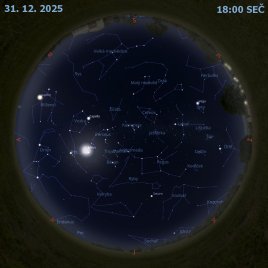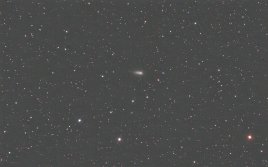MyCn 18: Planetární mlhovina Vyryté přesýpací hodiny

Uznání: NASA, ESA, Hubble; Processing & License: Judy Schmidt
Vidíte opravdu tvar přesýpacích hodin, nebo ten tvar vidí vás? Pokud si to umíte představit, tak prstence v MyCn 18 sledují obrysy přesýpacích hodin, i když s jedním neobvyklým okem v jejich středu. Písek času v každém případě vyprchává pro centrální hvězdu této planetární mlhoviny tvaru slunečních hodin. Její nukleární palivo je vyčerpané a tak nastává krátká, okázalá, závěrečná fáze života Slunci podobných hvězd, kdy odhazují svoje vnější vrstvy a jádro se stává chládnoucím a slábnoucím bílým trpaslíkem. Astronomové v roce 1995 využili Hubblův kosmický dalekohled k pořízení série snímků této planetární mlhoviny včetně toho, na který se díváte. Jsou zde zachyceny jemné prstence barevného zářícího plynu (dusík - červeně, vodík - zeleně a kyslík - modře), které ohraničují řídké stěny přesýpacích hodin. Bezprecedentně ostré snímky z Hubbla umožnily odhalit překvapivé podrobnosti procesu vyvrhování mlhoviny, který pomáhá odhalovat záhady komplexních tvarů a symetrií planetárních mlhovin jako je MyCn 18.
Seznam odkazů v popisu
- Wikipedia: Engraved_Hourglass_Nebula
- Wikipedia: Planetary_nebula
- NASA: Nuclear Thermal Propulsion: Game Changing Technology for Deep Space Exploration
- NASA: Our Sun
- Ncku.edu.tw: The Main Sequence Blues
- APOD: 2000-09-10 Chládnutí bílých trpaslíků
- APOD: 2001-08-06 Dalekohled Hubble Space Telescope na oběžné dráze
- APOD: Planetary Nebulae
- HubbleSite.org: Planetary Nebula MyCn18: An Hourglass Pattern Around a Dying Star
- Flickr.com: Judy Schmidt - MyCn 18 "Etched Hourglass"
- LANL.gov: Nitrogen
- Youtube.com: Hindenburg Crash in 1937 - Original Footage!
- Jlab.org: The Element Oxygen
- Wikipedia: Hourglass
- Harvard.edu: The Etched Hourglass Nebula MYCN 18. II. A Spatio-kinematic Model
- APOD: 1996-01-17 NGC 7027: A Dying Star's Nebula
- Washington.edu: The Catalog of Hubble Images of Nascent and Infantile Planetary Nebulae
NASA Official: Phillip Newman Specific rights apply. NASA Web Privacy Policy and Important Notices
A service of: ASD at NASA / GSFC & Michigan Tech. U.
Odkaz na originální APOD


